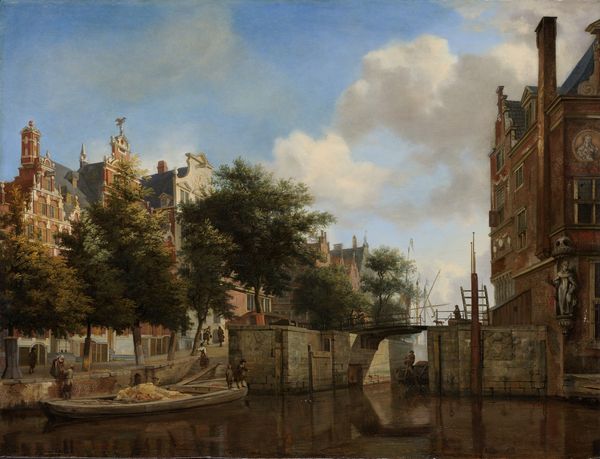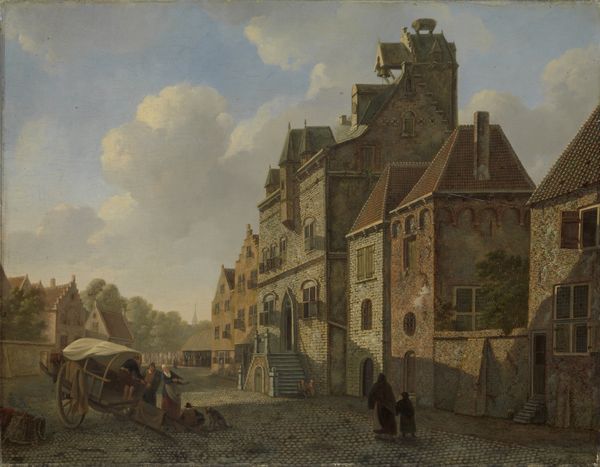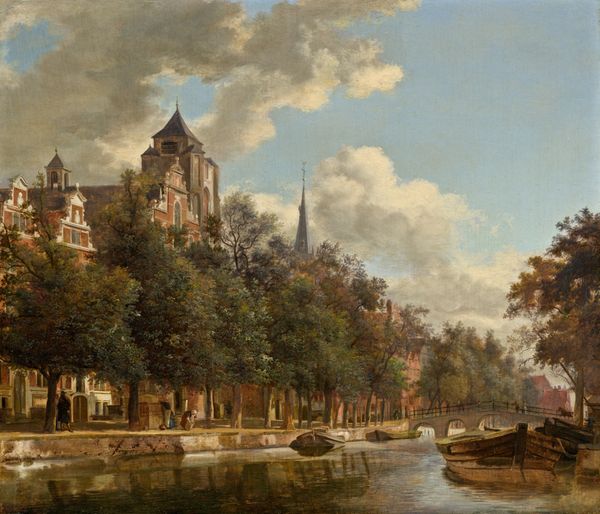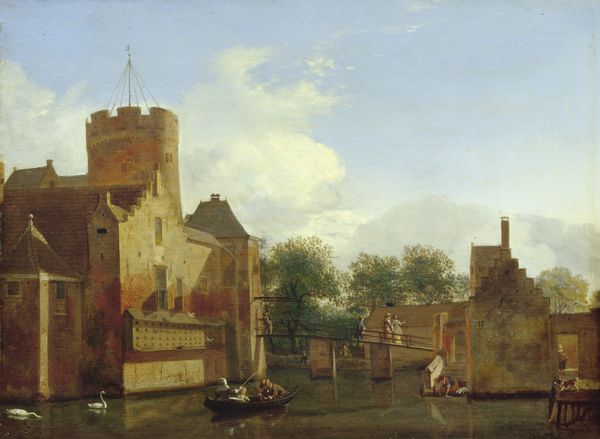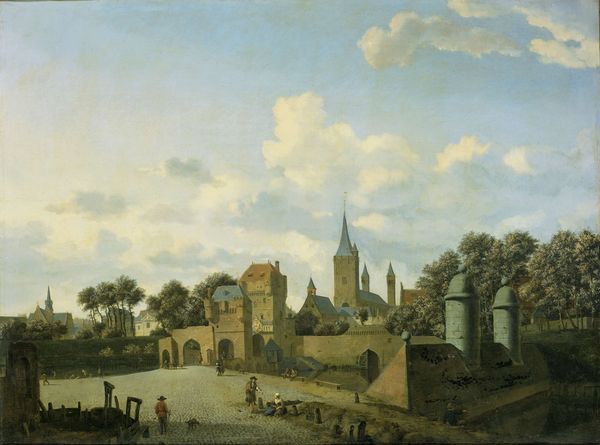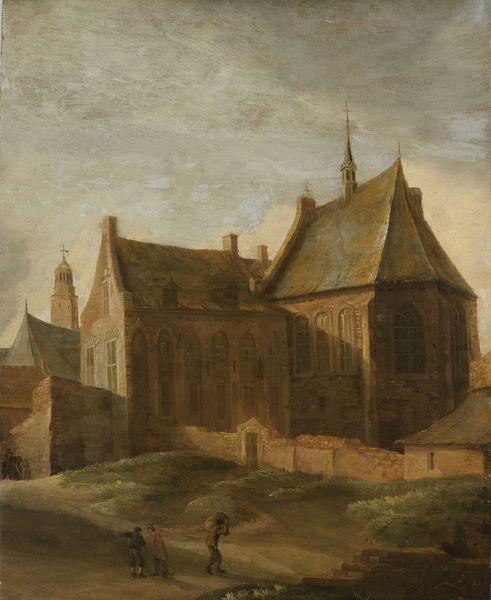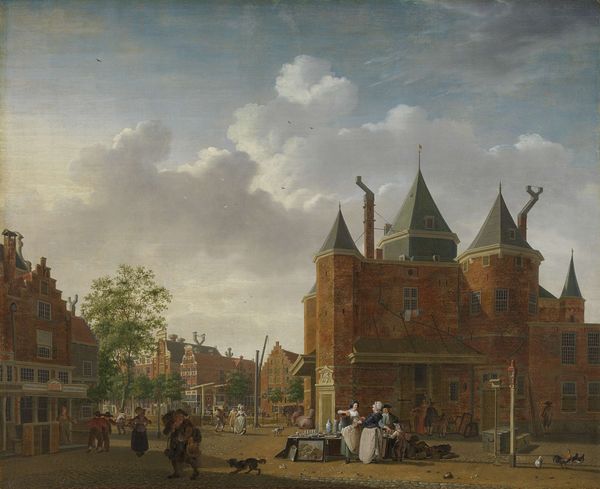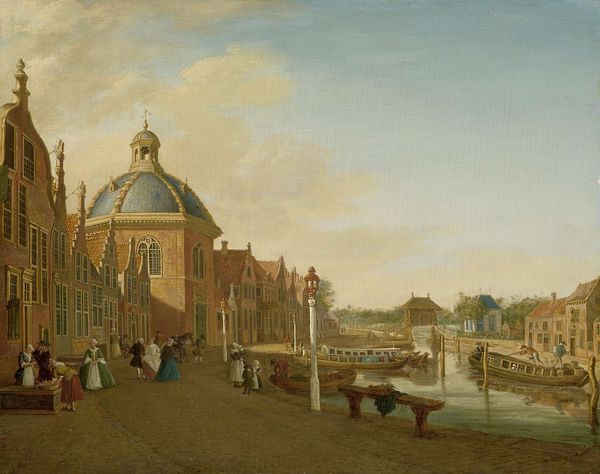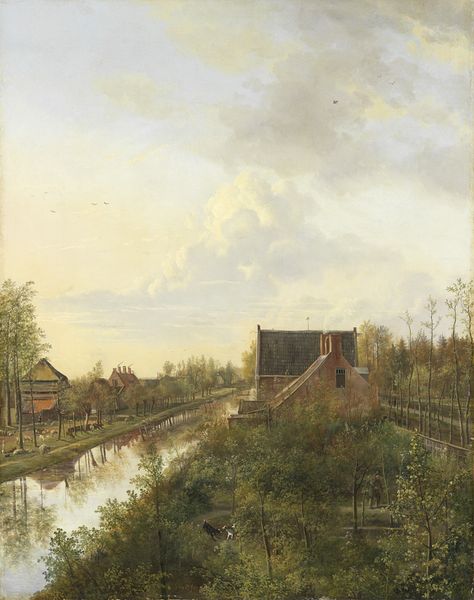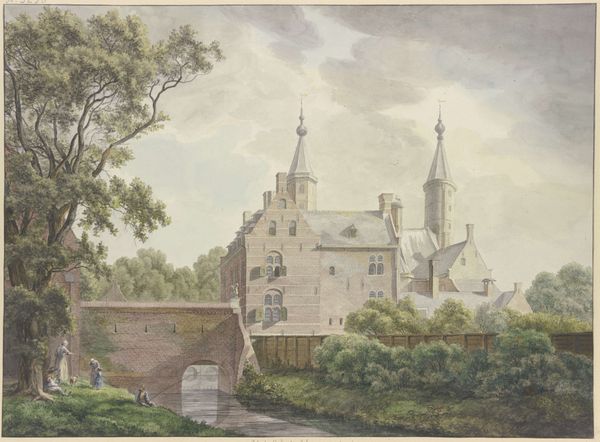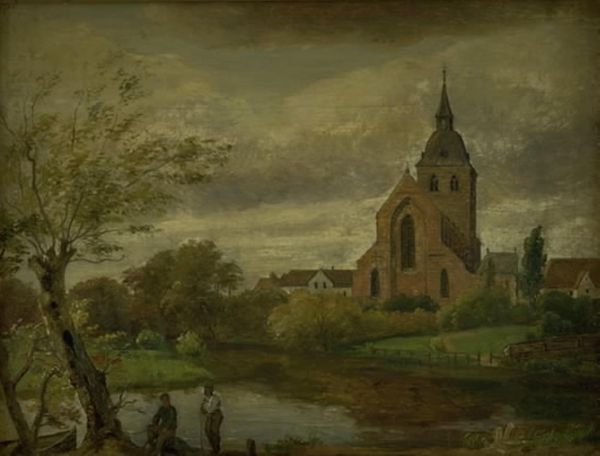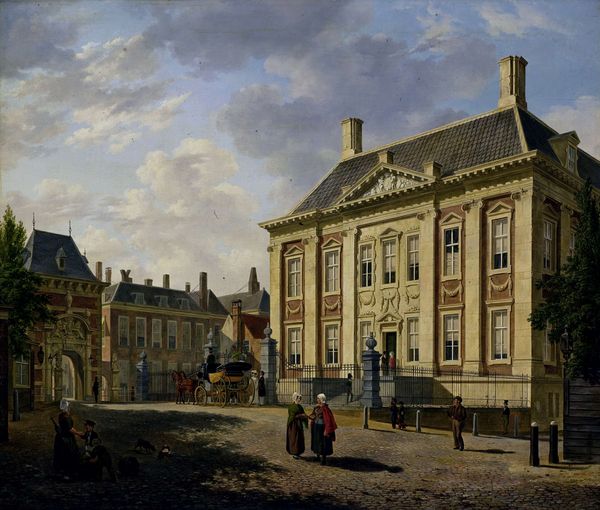
Dimensions: height 69 cm, width 88.5 cm, depth 7 cm
Copyright: Rijks Museum: Open Domain
Curator: Here we have Johannes Janson's "Heemstede Manor," an oil painting dating back to 1766, currently residing in the Rijksmuseum. Editor: My immediate reaction is a sense of serene formality. The rigid geometry of the building and canal, contrasted with those fluffy, towering clouds...it's a potent depiction of status and control. Curator: Indeed. It's worth considering how Dutch Golden Age landscape paintings like this one were deeply entwined with displays of wealth and power. The Manor itself acts as a representation of social and economic standing during the period. The careful rendering, down to the people strolling in the garden and the swan swimming in the canal...it's all deliberate. Editor: I wonder, though, what this depiction communicates about who *wasn't* represented here? Consider the labor required to maintain an estate like this, the social hierarchies implicit in the scene...whose stories are elided by this portrayal of idyllic tranquility? I think examining absences helps us to understand the painting and its era. Curator: That's a very astute observation. Looking at the institution, there's the family behind the estate and the social norms around land ownership and inheritance in 18th century Netherlands. And what did these land estates represent in terms of control of resources? How were those power structures playing out in Dutch society? Editor: The controlled environment here, that strict axial perspective…I think there is a real dialogue between Baroque aesthetics and Dutch Golden Age conventions at play. It’s almost an uneasy feeling; a picturesque ideal imposed, reflecting broader socio-political ideals and hierarchies. Curator: I concur. I think that studying these works helps one gain an entry into understanding power dynamics, the Dutch societal structure of the day, the status symbols in the country and region... the more critical and contextual perspectives give rise to such compelling observations. Editor: Absolutely, thinking about the art market and art audience, the people consuming this, that helps create the artwork's identity in time. I walk away thinking about art as propaganda and also about who these artworks leave out, these forgotten voices.
Comments
No comments
Be the first to comment and join the conversation on the ultimate creative platform.
